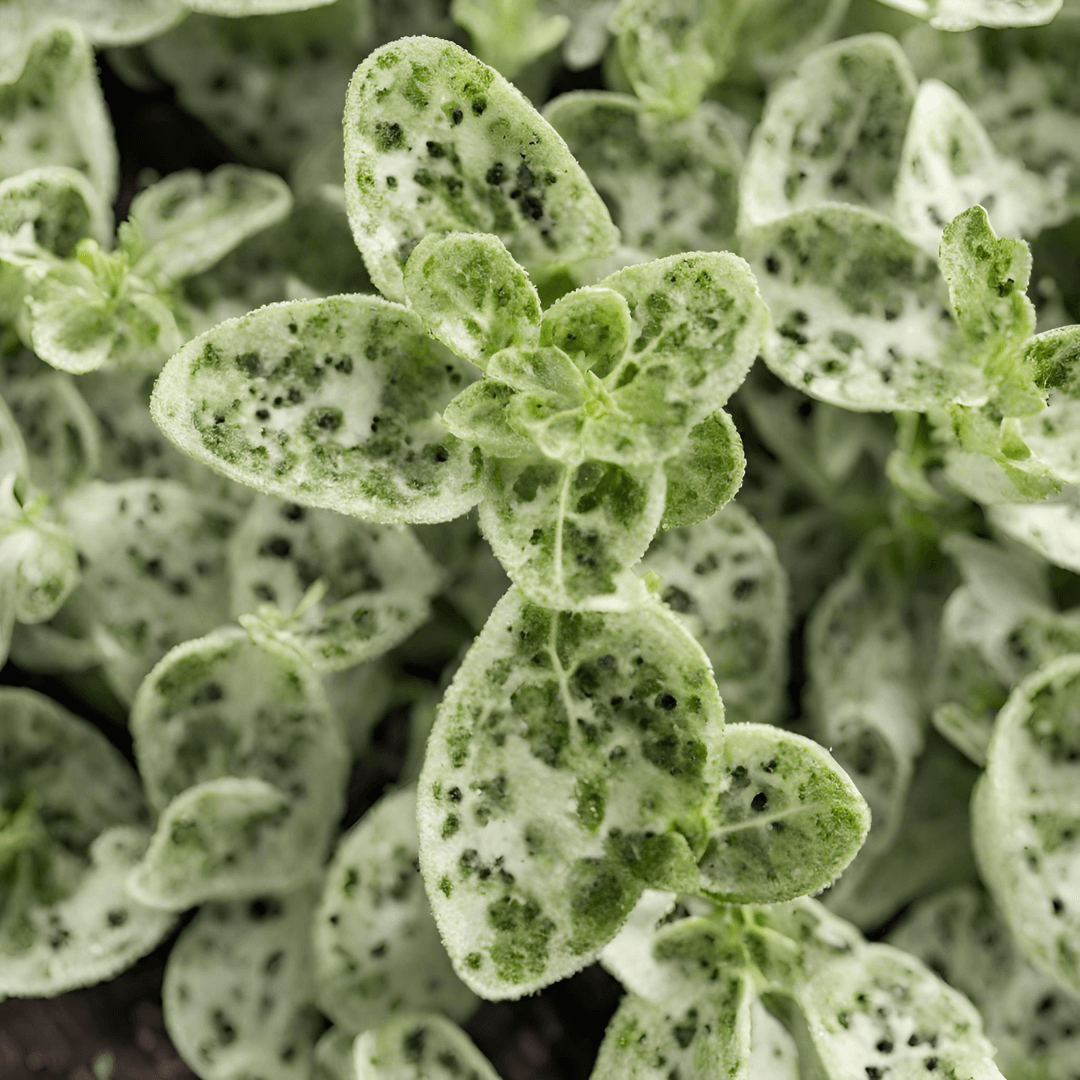
Oregano, a delightful herb known for its savory flavor and aromatic presence, can also fall prey to fungal and bacterial infections. These unwanted intruders may include the likes of gray mold, white powdery mildew, fusarium wilt, and leaf-affecting black spot. Even young oregano seedlings may encounter the dreaded damping-off disease. However, it’s essential to be vigilant and proactive to ensure your oregano thrives.
Among the various diseases that can afflict oregano plants, two fungal culprits often take center stage—fusarium wilt and root rot.
Fusarium wilt
Fusarium wilt primarily targets sweet oregano varieties, but no oregano is entirely immune. The telltale signs of fusarium wilt include:
- Stunted growth
- Wilted, yellowing leaves
- Brown spots or streaks on the stems
- Severely twisted stems
- Leaf drop
Fusarium wilt is caused by a fungus, which can be harbored in the soil of affected plants or transmitted through seeds from infected oregano plants. Unfortunately, there is no cure for fusarium wilt. The best course of action is to promptly remove and destroy all infected plants upon detection.
Additionally, it’s advisable not to replant oregano in the same area for a period of two to three years. Even if a particular oregano plant is not susceptible to fusarium wilt, it may carry the disease and infect neighboring plants. To safeguard your oregano crop, consider planting disease-resistant oregano varieties as a preventative measure.
Root rot
Root rot tends to rear its ugly head when the soil remains excessively waterlogged over an extended period. As the roots deteriorate, nutrient and water uptake become compromised, leading to yellowing, wilting, and the eventual shedding of leaves, usually starting with the lower ones. To prevent root rot, it’s crucial to provide your oregano with well-draining soil and ensure it receives just enough water to keep the soil moist to a depth of 1 inch. The application of Fosetyl-al fungicide can also aid in keeping root-rot fungi at bay. The most effective remedy, however, is to exercise caution in your watering practices and ensure that your oregano plants have proper drainage from the outset.
To steer clear of issues associated with oregano diseases, consider these practical tips:
- Choose the right planting time: Wait for warmer weather before planting your oregano. This will reduce the risk of disease development and promote healthier growth.
- Provide adequate spacing: Allow ample space between oregano plants to encourage optimal air circulation. Tight plant spacing can create an environment conducive to the growth of fungi and bacteria on your oregano.
Tending your oregano
Here are two fundamental oregano-tending techniques to keep your oregano flourishing:
- Watering wisdom: Maintain a consistent and appropriate watering schedule for your oregano. Avoid both underwatering and overwatering, as they can lead to problems. Water at the base of the plants, directly onto the soil, rather than over the plant foliage. Consistently damp conditions resulting from improper watering can provide a thriving ground for harmful bacteria and fungi.
- Eliminate infections: If you notice any signs of disease in your oregano plants, act swiftly. Remove and discard infected oregano plants; do not leave them in your garden over the winter and avoid adding them to your compost pile. Even deceased, disease-ridden plants can continue to spread their maladies to other plants or contaminate your soil.
Have you encountered issues with diseases affecting your oregano plants? What challenges have you faced while tending to your oregano? Please share your experiences and insights on how you manage and prevent diseases from jeopardizing your beloved oregano crop.


 Previous
Previous

